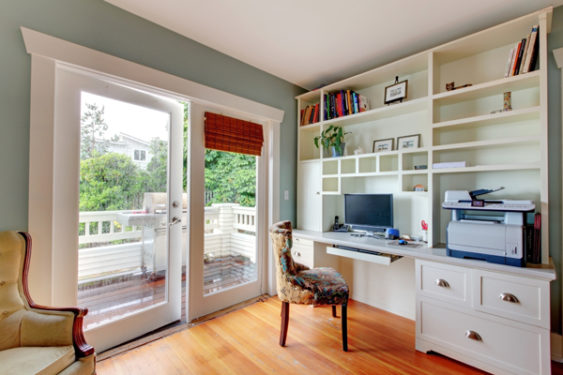
(StatePoint) – The old 9-to-5 isn’t what it used to be. As more companies embrace telecommuting, a growing number of employees are finding that even in the professional realm, there’s no place like home. Set up an elegant and efficient home office for success.
Commission Floor Plans
It’s a good idea to have plans drawn up by an architect. Knowing your exact square footage has tax-savings implications: If your home office is your principal workplace, you may qualify for a home office tax deduction (what the IRS calls “business use of your home”) based on the overall area of that space.
Plus, an architect may be able to see beyond walls to find potential spatial configurations you might not have considered.
Define the ‘Work Space’
Working from home may be an escape from cubicle land, but it’s still important to define your workspace. If it’s not possible to turn an existing room into your office, consider using an uncluttered portion of your basement, attic or garage.
A tax deduction applies only to space used exclusively as a home office, so simply putting a desk in your living room doesn’t make you eligible, nor will it prevent distractions.
Be Comfortable
Don’t just grab an extra dining room chair. Chair designs have improved thanks to ergonomic research over the last half century. Choose one that will keep your posture vertical and your mind sharp.
Get Lit
Ideally, your home office will have at least one window, but also invest in a swing-arm desk lamp to provide ample illumination for concentrated tasks.
Clear Clutter
Avoid toppling stacks of documents and make the recycling bin your new best friend. A small filing cabinet should be able to hold all of your records. Many home furnishings can be repurposed if a filing cabinet feels too corporate.
Grow Something
Not only are there health benefits associated with keeping plants indoors, they’ll be there when you need to take a break. Gentle pruning can prove meditative, and can be a good way to refocus.
Keep a Schedule
Online newsfeeds and day-to-day housework can be distracting. Approach working at home with the same level of professionalism you’d bring to an office setting. Display a clock and wall calendar for visual reminders of deadlines.
Communicate
Responding promptly to emails and calls lets co-workers know that you’re reliable. Substitute face-to-face time with FaceTime (or another video-enabled communication service).
Take Breaks
Anyone familiar with water cooler chatter knows that offices are highly social. That’s an aspect of your day that can feel like it’s missing. So step outside every few hours; wave to your neighbor or walk to a coffee shop.
